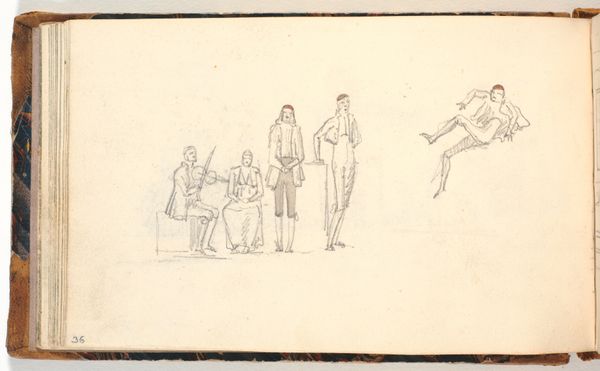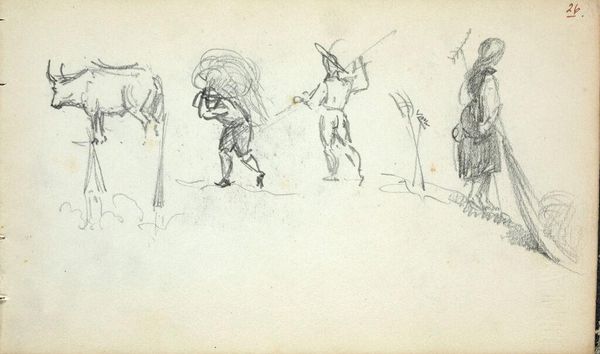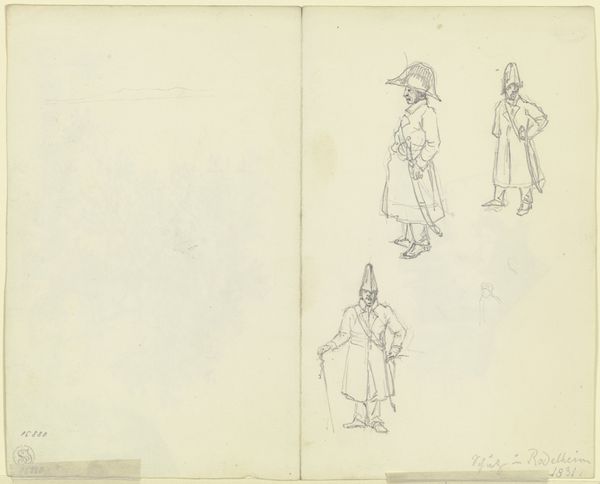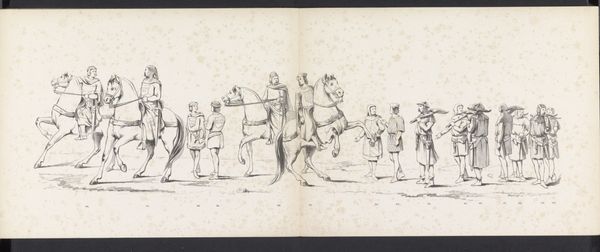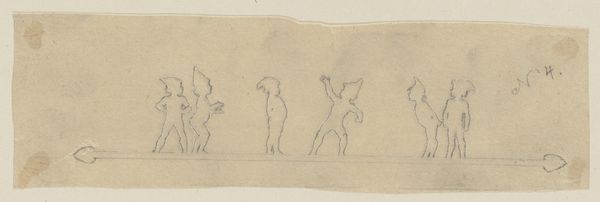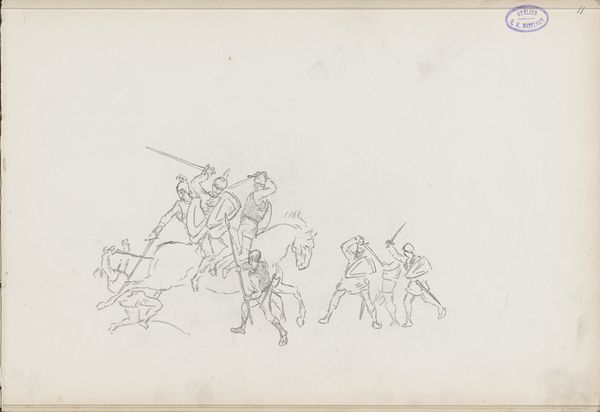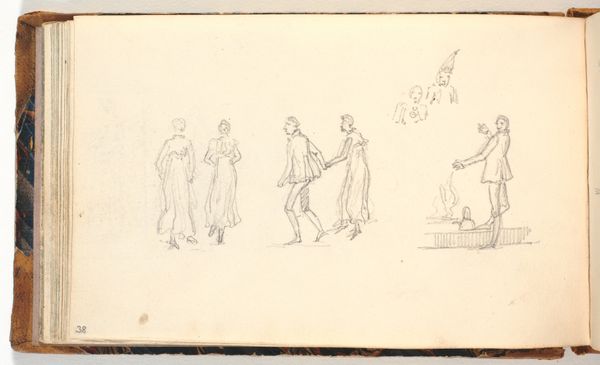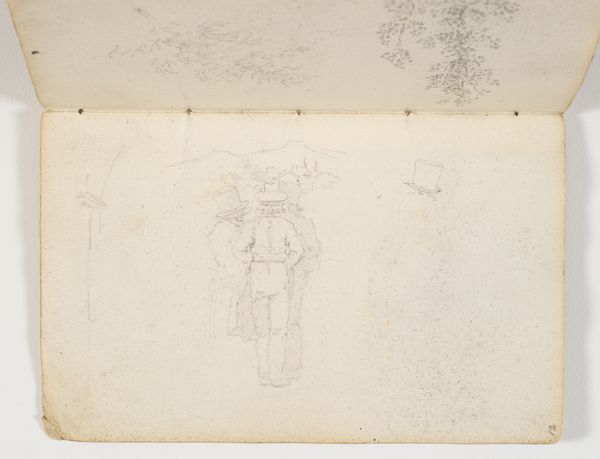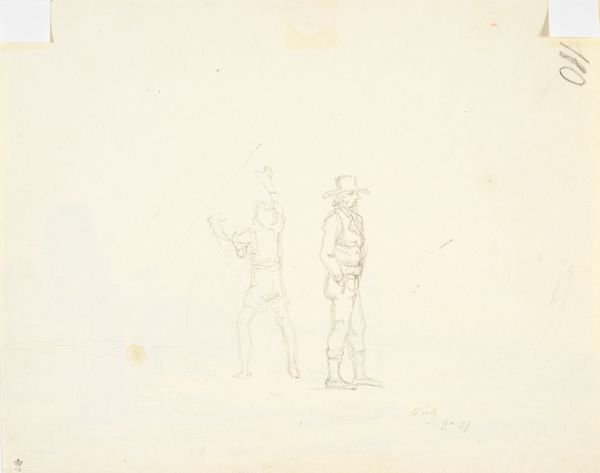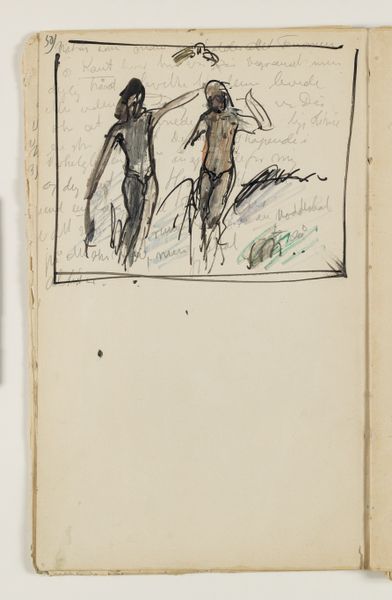
drawing, paper, pencil
#
drawing
#
narrative-art
#
landscape
#
figuration
#
paper
#
romanticism
#
pencil
Dimensions: 113 mm (height) x 160 mm (width) (bladmål)
Editor: Here we have J.C. Dahl's "Three Men Carrying Large Burdens on Their Necks and Heads," a pencil drawing on paper from the 1820s. It feels…stark. There's this empty space around these figures, and their stooped postures really emphasize the weight they carry. What visual elements stand out to you? Curator: Indeed, the artist's deft use of line and form is paramount here. Observe the rhythmic repetition of the figures; each echoes the others, creating a sense of continuous labor. The very sketchiness of the line lends a raw, almost brutal quality to the scene. Consider the blankness of the background: rather than a detailed environment, it is the weight of the implied burden that commands our attention. What compositional strategies do you notice? Editor: Well, the men are almost silhouetted, and the lack of detail on their faces makes them seem universal. The burden is almost abstract – bundles of sticks or cloth or something unknown, it doesn't really matter, does it? The drawing emphasizes the abstract idea of labor more than the specifics. Curator: Precisely. It's the formal arrangement, the relationships between line, space, and form that create the power of the work. Forget the external context; how do the individual marks build toward the totality of the image? Editor: So, the drawing's power comes from the visual language itself, rather than what it represents? Curator: Exactly. It's the semiotic construction of meaning through purely visual means. By reducing the scene to its essential forms, Dahl invites us to contemplate the formal properties. The texture of the lines implying both weight and the figures’ struggle... Editor: This makes me appreciate how form itself is meaning! The artist controls what is presented but our brains immediately process so much extra information that wasn't drawn, a kind of co-creation! Curator: Precisely. Form informs content.
Comments
No comments
Be the first to comment and join the conversation on the ultimate creative platform.
